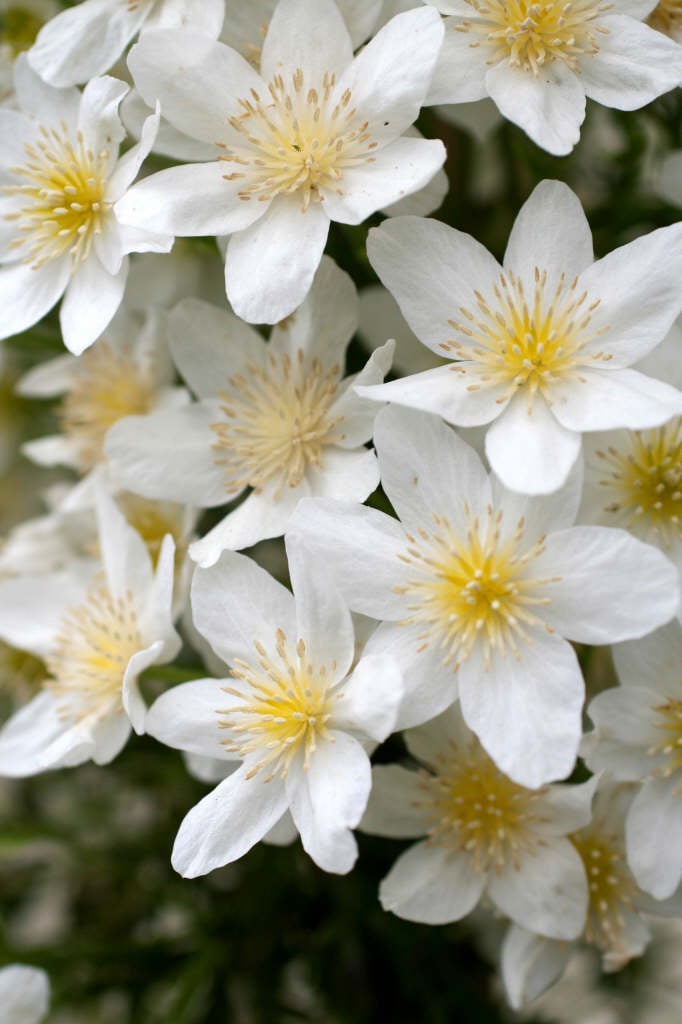Clematis × cartmanii 'Avalanche' (Fo/m)
clematis 'Avalanche'
A bushy trailing or scrambling evergreen non clinging climber to a maximum height of 3m, with deeply dissected glossy, leathery, deep-green leaves. Panicles of pure white flowers to 4cm across, in early to mid spring
Size
Ultimate height
2.5–4 metresTime to ultimate height
5–10 yearsUltimate spread
1.5–2.5 metresGrowing conditions
Moisture
Moist but well–drainedpH
Acid, Alkaline, NeutralColour & scent
| Stem | Flower | Foliage | Fruit | |
| Spring | White | Green | ||
|---|---|---|---|---|
| Summer | Green | |||
| Autumn | Green | |||
| Winter | Green |
Position
- Full sun
- Partial shade
Aspect
South–facing or East–facing or North–facing
Exposure
Exposed or Sheltered Hardiness
H4Botanical details
- Family
- Ranunculaceae
- Native to GB / Ireland
- No
- Foliage
- Evergreen
- Habit
- Climbing
- Potentially harmful
- Skin irritant. Wear gloves and other protective equipment when handling. Pets (rabbits): Harmful if eaten. For further information and contact numbers regarding pets, see the HTA guide to potentially harmful plants
- Genus
Clematis can be deciduous or evergreen shrubs or herbaceous perennials, mostly climbing by twining leaf-stalks, and often with showy flowers. Some have attractive fluffy seedheads in autumn
- Name status
Accepted
- Horticultural Group
- Forsteri Group clematis are dwarf spreading or prostrate evergreen shrubs, usually dioecious, with deeply cut, trifoliate leaves and small cream or white, sometimes fragrant, flowers
How to grow
Cultivation
Prefers well-drained, gritty soil in full sun or part shade with shelter. Plant with the crown at soil level. Can be grown in a container in a cold greenhouse or conservatory. See clematis cultivation for further information
Propagation
Propagate by layering or semi-hardwood cuttings
Suggested planting locations and garden types
- City and courtyard gardens
- Gravel garden
- Patio and container plants
- Rock garden
- Cottage and informal garden
- Flower borders and beds
Pruning
Pests
May be susceptible to aphids, snails and caterpillars; petals may be eaten by earwigs
Diseases
May be susceptible to honey fungus (rarely), clematis wilt and clematis slime flux
Get involved
The Royal Horticultural Society is the UK’s leading gardening charity. We aim to enrich everyone’s life through plants, and make the UK a greener and more beautiful place.
